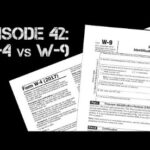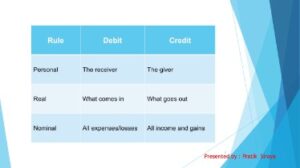
QuickBooks, a leading accounting software, stands as a crucial tool in this endeavor. Its advantage lies in its ability to streamline and enhance the account reconciliation process, thereby contributing to the overall financial health of an organization. Let’s delve into the specific advantages that QuickBooks brings to the table. Accessing the reconcile window in QuickBooks Desktop is the initial step in the reconciliation process, enabling users to match the financial records with the bank statement and ensure accuracy. Entering the ending balance in QuickBooks Online is a crucial step in the reconciliation process, ensuring that the financial records align with the closing balance of the bank statement.
You should reconcile your bank and credit card accounts in QuickBooks frequently to make sure they match your real-life bank accounts. The reconciliation process is concluded by affirming that the closing balances match, signifying the successful alignment of the financial records with the official bank statements. Gathering the bank statement and transactions is the initial step in reconciling a bank statement in QuickBooks, enabling the comprehensive matching of financial data with the official bank records. Entering the ending balance in QuickBooks Desktop is a critical step in the reconciliation process, ensuring that the financial records match the closing balance of the bank statement accurately. Accessing the reconcile tool in QuickBooks Online is the initial step in the reconciliation process, allowing users to review and match the financial records with the bank statement.
Maintaining accurate transaction records is vital for financial reporting and decision-making processes within organizations. Reviewing transactions in QuickBooks Online facilitates the identification of fraudulent ar days simple activities or unauthorized charges, contributing to a comprehensive and secure financial management system. Reconciling statements with your QuickBooks company file is an important part of account management.
Streamlining Payroll Management with QuickBooks
You can then select Start reconciling to begin the reconciliation of each transaction in that account. When you’re single entry on a grocery list crossword puzzle clue done reviewing your statement, you’ll know everything made it into QuickBooks. To enter the ending balance, you should first navigate to the ‘Reconcile’ page and select the appropriate account. Sometimes things get missed – it’s bound to happen every once in a while.
- This crucial process begins with gathering the bank statements and transactions from the relevant accounts.
- This process involves meticulously reviewing each transaction entry in QuickBooks and cross-referencing it with the corresponding entry in the bank statement.
- Complete the reconciliation by clicking Reconcile Now to verify and finalize the process.
- This process is crucial for ensuring that all transactions recorded in the accounting system align with the actual activity in the bank account.
Step 1: Accessing the Reconciliation Tool
If you’re a business owner or an accountant, you’re likely aware of the crucial role that accurate financial records play in the success of your enterprise. In the realm of financial management, reconciling accounts stands as a fundamental task. It ensures the harmony between your recorded transactions and the reality reflected in your bank statements. QuickBooks, a leading accounting software, offers a powerful toolset for precisely this purpose.

Over a short timeframe such as a month, differences between the two balances can exist (due to bank errors or checks that have not been cashed by the payee, for example). Frequent reconciliation is important to ensure your QuickBooks accounts remain accurate. Finally, you need to make sure all transactions are matched to already-entered transactions, or categorized and added if there is no such transaction entered already. QuickBooks will attempt to match downloaded transactions to previously-entered transactions to avoid duplication. To carry out a reconciliation, you will need to have your monthly bank or credit card statements on hand. (If you’re in the middle of reconciling, stay on the page you’re on and skip to step 4).
If you’re new to reconciliations or need more help, reach out to your accountant. This can get tricky and they know how to handle the next steps.Don’t have an accountant? You also need to ensure that the opening account balance shown in QuickBooks is correct. This is especially important the first time that you carry out a reconciliation. The opening balance should match your bank account balance period in question.
Step 5: Addressing Discrepancies
It ensures that QuickBooks entries align with those in your bank and credit card account statements. When reconciling an account, the first bit of information you small business taxes and management need is the opening balance. If you choose to connect your bank and credit cards to your online account, QuickBooks will automatically bring over transactions and also the opening balance for you. Use this guide anytime you need help doing or fixing a reconciliation.
Select a Country
If your beginning balance doesn’t match your statement, don’t worry. From hosting and domains to essential plugins and transaction fees, discover the real cost. Once connected, all bills in QuickBooks Online will sync in real-time with Wise. Bill payments are automatically synced, matched, and categorized in QuickBooks. QuickBooks will load the statements and facilitate a side-by-side comparison.
